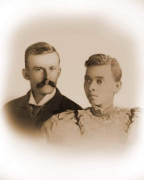
By Tara Chadwick
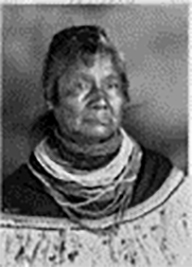 Starting in 1691, the colony of Virginia began the practice of regulating the legal identity of human beings based on genealogy. This included a ban on interracial marriage and government workers given the task of determining the ethnic/ racial identity of each resident based on the presence or absence of an African descended ancestor. Almost two centuries later, in 1865, a similar law was passed in Florida.
Starting in 1691, the colony of Virginia began the practice of regulating the legal identity of human beings based on genealogy. This included a ban on interracial marriage and government workers given the task of determining the ethnic/ racial identity of each resident based on the presence or absence of an African descended ancestor. Almost two centuries later, in 1865, a similar law was passed in Florida.
Legislating Where We Live
One hundred years ago in Fort Lauderdale, these Jim Crow era Black Codes were manifested through urban planning and zoning ordinances enacted here and around the country. The quadrant system instituted in the 1920s legislated segregation in housing, education, and business affairs, requiring all Black businesses and families relocate and relegate themselves to the northwest quadrant of each city. During segregation, as during enslavement, White people and all who assimilated into the White socio-cultural worldview expended much effort creating a social order in which lighter skin color meant more favorable economic and legal standing, the impacts of which we are still witnessing today.
Our Home on Indigenous Land
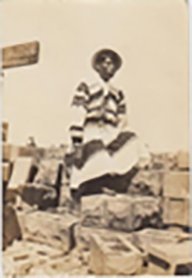 Sistrunk is known worldwide as a historically Black community in South Florida, but have you ever wondered or thought about the land on which we stand, this sacred space we share, how it formed, what it used to look like, who took care of it before we got here? There does seem to be a gap in the historical knowledge within our public and popular education systems. But we cannot deny that our existence as humans in this neighborhood, on this continent, in this current time is a direct result of the ecological practices of the people who have cared for this land since before the last ice age and have also suffered from discriminatory race-based practices.
Sistrunk is known worldwide as a historically Black community in South Florida, but have you ever wondered or thought about the land on which we stand, this sacred space we share, how it formed, what it used to look like, who took care of it before we got here? There does seem to be a gap in the historical knowledge within our public and popular education systems. But we cannot deny that our existence as humans in this neighborhood, on this continent, in this current time is a direct result of the ecological practices of the people who have cared for this land since before the last ice age and have also suffered from discriminatory race-based practices.
The exact opposite of the “one drop rule” for African descendants was imposed “blood quantum” identity measurement imposed on Native Americans. Although concepts of identity and belonging based on measurement of blood quantum or “degree of Indian blood” was never part of most indigenous governance systems, and not adopted by US imposed tribal governments until after 1934, these post enslavement era “Racial Integrity” laws reinforced segregation, supported the creation and maintenance of Whiteness as a social identity, and bureaucratically eliminated large segments of already dwindling Native American populations thereby reducing the cost of treaty obligations and further limiting the political power of Indigenous People.
Still, through 500 years of physical, mental, and bureaucratic battles, our presence here is a testament to the resistance and resilience of Indigenous People.
If not for the 10,000+ years of social and environmental responsibility practiced by the people we now know as Seminole, Miccosukee, and their ancestors, this beautiful strand of rivers, forests, and beaches we hold so dear may not exist. If not for the 50,000+ years of care for the soil, air and water that Indigenous People have gifted this continent, the Anthropocene epoch we are beginning to witness, and its detrimental effects on global temperatures, toxic contaminants and sea level may have started hundreds or thousands of years before the arrival of the first treasure seekers from across the waters. If we are to find ways to mitigate the climate, pollution, food insecurity and biodiversity crises we are witnessing, we must all find our way back to the basics. Respect. Observation. Critical thinking. Listening.
Looking back to go forward
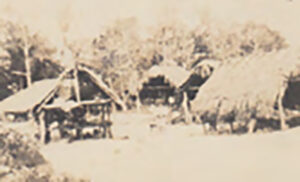 Four years ago, I had the opportunity to share a few moments with an elder member of the Trailblazers at the 80th Anniversary of the Dixie Court Apartments across from Walker Elementary and Old Dillard Museum. As a relatively new resident of Fort Lauderdale, I am always excited to hear the recounting of memories of our neighborhood. In this case, I was called aside and one of the elder Trailblazers shared a memory from her childhood of the first playground in all of Fort Lauderdale.
Four years ago, I had the opportunity to share a few moments with an elder member of the Trailblazers at the 80th Anniversary of the Dixie Court Apartments across from Walker Elementary and Old Dillard Museum. As a relatively new resident of Fort Lauderdale, I am always excited to hear the recounting of memories of our neighborhood. In this case, I was called aside and one of the elder Trailblazers shared a memory from her childhood of the first playground in all of Fort Lauderdale.
It was right there in Dixie Court. It was during segregation, and some of the White kids would try to sneak over to play. Nobody minded, but the White kids would get in trouble with their parents if they got caught. There was also a new wash house, a gleaming shiny source of pride where Saturdays were spent doing laundry. And then, every Friday, an old Seminole woman would come walking around the neighborhood from her camp at the river with a big basket full of huckleberries. Everyone would look forward to buying her huckleberries, and she would always go back with an empty basket, having distributed her produce among the neighbors.
It’s likely that the Seminole woman in the story may have been Annie (Jumper) Tommie, the last matriarch to keep her camp in Fort Lauderdale at the North Fork of the New River.
We all still have those matriarchs in our families and communities who guide us with their actions. And we can still cultivate the soil to grow and share food and medicine to keep our families healthy.
If we are to move into a future where ideals of liberty, equality and justice still exist, we need to renew our understanding of respect and repair our relationship with the land.
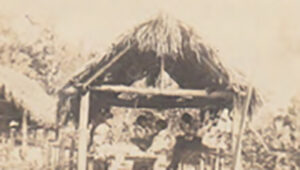 Let us never forget who we truly are, our strength, knowledge, interdependence, and our responsibility to this Earth we share. Although many of us have been disconnected from our ancestral territories and villages for over 500 years, our grandparents, and the lands near and far continue to support and sustain us; they know exactly who we are. Thank you to the elders and youth who continue to guide our path, as we return to our true selves, remember, and pursue our purpose within our families, communities, and all of creation.
Let us never forget who we truly are, our strength, knowledge, interdependence, and our responsibility to this Earth we share. Although many of us have been disconnected from our ancestral territories and villages for over 500 years, our grandparents, and the lands near and far continue to support and sustain us; they know exactly who we are. Thank you to the elders and youth who continue to guide our path, as we return to our true selves, remember, and pursue our purpose within our families, communities, and all of creation.
Tara Chadwick wabigun@yahoo.com – (786) 671-8272
PS: Do you have a Sistrunk story, sound, clip or photo to share? If so let me know! And please do take a moment today and send your letter to President Biden urging the release of our elder political prisoners Leonard Peltier – who has already served 47 years for aiding and abetting people who were released decades ago on falsification of evidence – and Mumia Abu Jamal both of whom are in dire need of clemency based on their age, decades served and medical conditions. Address your letter, note or postcard to: The White House,1600 Pennsylvania Avenue NW, Washington DC 20500.


Be the first to comment